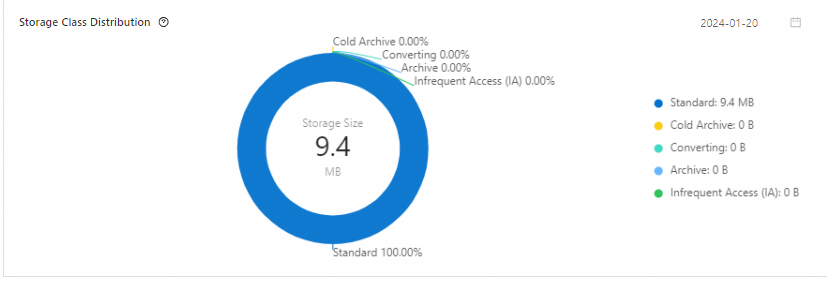The storage overview displays data of the previous day (T-1), including the basic information about storage and metadata objects, storage trends, storage class distribution, table format distribution, and file distribution. This helps you quickly understand the current storage resource usage and potential issues, allowing you to take measures for optimization.
Prerequisites
Object Storage Service (OSS) is activated.
Location hosting is completed in DLF. See Location hosting.
Activate storage overview
Log on to the DLF console.
In the left-side navigation pane, click , and click Enable Now to activate the storage overview feature.
If you enable this feature, OSS buckets of database are written to statistical files. You are charged for the storage of these files.
No statistics data is generated on the first day of activation. You need to wait until the data is produced the next day to view the statistics information.
Feature description
Metadata analysis
Total resources
Total storage volume and monthly/daily changes: The total storage volume of tables in metadata management (only includes OSS type storage, excluding HDFS storage).
Total number of tables and monthly/daily changes: The total number of all tables in metadata management.
Total number of databases and monthly/daily changes: The total number of all databases in metadata management.
API monthly/daily access volume: The API access volume for the current month (calendar month).

Trend changes
Trend change graphs of storage volume, number of tables, number of databases, and API interfaces. You can select the time period to query according to the time segment.

Table/database storage ranking
Statistics on the size ranking of OSS storage occupied by tables/databases. Optimize the top-ranked tables/databases according to business needs.

Storage class distribution
View the distribution of storage archives on OSS. OSS storage includes standard, IA, archive, and cold archive storage. You can choose the appropriate storage method for different business data as needed to optimize storage costs.

Storage format distribution
View the storage format distribution of statistical tables.

File distribution and rankings of small files
Statistics on the distribution and ranking of size files. You can optimize tables with many small files according to business conditions to improve query performance.

Location analysis
Statistics on Location storage trends, request trends, and storage ranking. You can query by OSS Bucket and time segment.
Location storage trend analysis

Location request trend analysis

Location storage ranking
